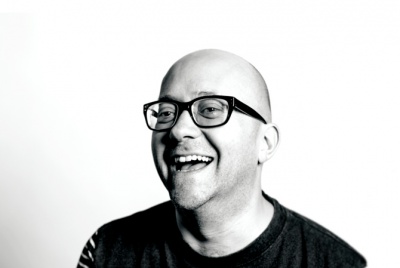How can you keep print design exciting?
Last week, we looked at Mina Lima’s inventive illustrations for a new edition of Peter Pan. We ask a selection of designers how you can keep print design captivating in an increasingly digital world.

“Print is defined by its exciting sensory pleasures, which are very different from the 2D digital world – so to keep things exciting, print just needs to remember its roots. The heft of a perfectly new tome, the weightlessness of a single leaf of paper and the thinnest layering of ink to render ideas is inarguable. As too is the smell of freshly printed pages, the feel of paper and cloth, the sound of crisp pages turning. All of these add up to an authentic cultural relationship with word and image, something as yet unachievable in the digital world.”

“Consider print in similar terms to digital, but play on print’s strength – tactility. Create a user experience where engagement and interaction is maximised through a page turn reveal or the surprising choice of paper or finish. Print isn’t prone to technology breaking – we can reach the end of The Times front page without Wi-Fi dropping off, or the last page of Fifty Shades before the Marbs’ sun defeats the Kindle screen. But that doesn’t mean any less effort is required – you still need great content and the user experience mustn’t fail due to copy set in 5pt Baskerville, white on yellow.”

“I don’t think this is about print versus digital, which feels like an old-school way to approach things. I feel that the future is about blending the two, where digital brings magic to print. We’re not that far off having Harry Potter-style OLED technology in every-day objects, blurring the lines between both worlds. Designers need to embrace the idea of ‘interactivity’ and learn from digital. Putting the user in the driver’s seat, moving away from the traditional linear journey and mimicking how digital content is digested are where things get interesting.”

“Bear with me here, pop pickers – I’ve got an analogy and I’m going to use it. Digital media is very much like the arrival of synthesisers in pop music in the 1970s and 1980s. ‘Guitars are dead,’ proclaimed the synthpoppers. ‘Real drums are so 1973,’ they said, in voices like Twiki’s out of Buck Rogers. But as music matured, so synthetic music became part of the overall toolbox, rather than a replacement for analogue. See also CGI in the movies: both the bonkers Mad Max Fury Road and the upcoming new Star Wars flicks are making much use of practical, physical effects alongside CGI. The palette broadens with digital, but isn’t replaced by it. And so it is with print media – our lives are enriched by our increasing use of digital media, but we still love the tangible, the tactile and the inky. As with the examples above from music and movies, the forward march of digital meant that print became missed, desirable, exotic and exciting as a result. Print can do things that pixels can’t. And here’s the best bit – you can have both!”

“Print, digital, ambient, below / above the line (whatever that means) – cheese, pickle, onion – they’re just mediums, aren’t they? Brilliantly executed, innovative ideas – in whatever form – are more likely to keep things exciting.”
-
Post a comment




